How Mid-Career Hires and Transplants from TEPCO and Chubu Electric Power Are Shaping JERA's Flat Organizational Structure
10 July 2023
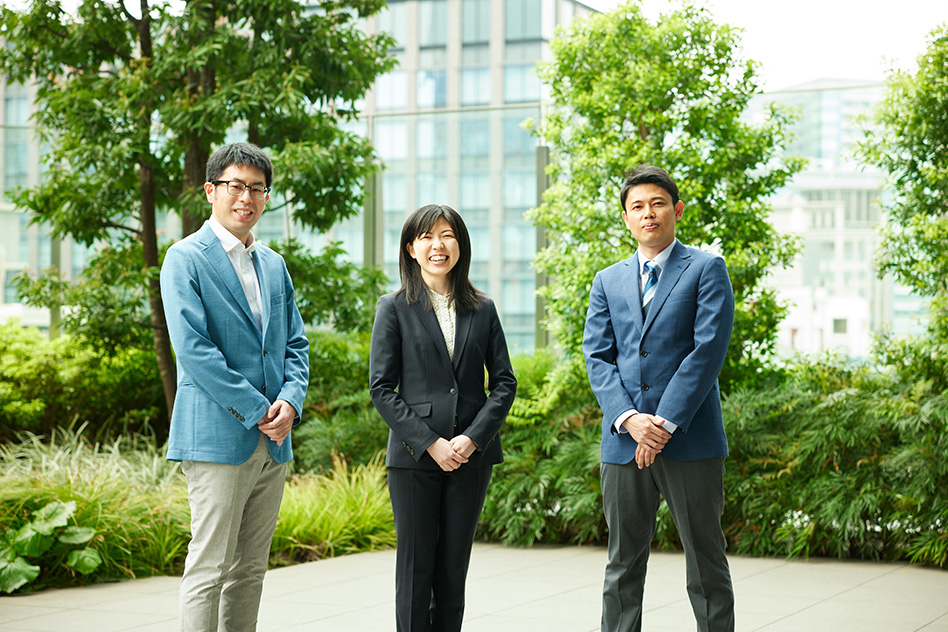
As Japan's largest power generation company, JERA operates businesses throughout the entire energy supply chain, from fuel upstream and procurement to power generation, across three business divisions: Business Development, Optimization, and O&M Engineering.
Here, we sit down with three JERA employees, one from each division, who are meeting each other for the first time to have an honest discussion about the realities facing the company.
In our roundtable discussion, we welcome Mahathir Jamaluddin from the Business Development Department, Reiko Kojima from the Optimization Department, and Kazuki Yasuda from the O&M and Engineering Department.
Kazuki is a transplant from TEPCO, while Reiko comes from a career at Chubu Electric Power. Mahathir made his mid-career transition from a non-electric energy company. We began by having them share their impressions of the electric power industry prior to joining JERA.
Kazuki: Before I joined TEPCO, I pictured a large organization with limited flexibility, and I admit that there were times when I felt that way. For example, there was a deep-seated culture of hierarchy and seniority at the power plant where I was first assigned. But at the same time, having that kind of robust chain of command was essential for equipment safety.
Reiko: True. To be honest, before joining Chubu Electric Power, I also had the impression I would be carrying out prescribed assignments in a prescribed order without much room for freedom or flexibility. My three years there were spent working at power plants, so this approach to work was relatively common. However, as Kazuki says, there’s an element of safety that is maintained by following procedures to the letter.
Mahathir: I’m from Malaysia and came to Japan in 2003 to study abroad. After university, I got a job in Japan and continued living here. I often hear that among non-Japanese people, the general impression of Japanese companies is that they are rigid and inflexible.
I’ve worked for other Japanese corporations before, JERA being my third employer in Japan. Before coming here, I assumed it would be a traditional Japanese company, but I came across JERA's corporate website during my job search and was genuinely impressed with its messaging with taglines like “Creating fire without CO2” and “Making the impossible possible.”
I applied because the company was doing something that seemed challenging yet fascinating. The first half of my job interview was in Japanese, and the second half was in English. This bilingual approach left me with the impression of a genuinely global company, and I thought it would be the perfect fit for me.
Kazuki and Reiko, two professionals from different electric power companies, chose to transfer to JERA after being approached by their bosses. They both say they had high expectations for the new organization.
Yasuda: When I joined TEPCO, I was told that there was a possibility that I would be transferred to JERA, and I was excited by the prospect that my work would have a greater impact on society. So I was thrilled when my boss approached me about it.
Even at TEPCO, I was driven by a desire to try new things and had worked in a new department dedicated to handling data, so I was excited to embark on fresh challenges after moving to JERA.
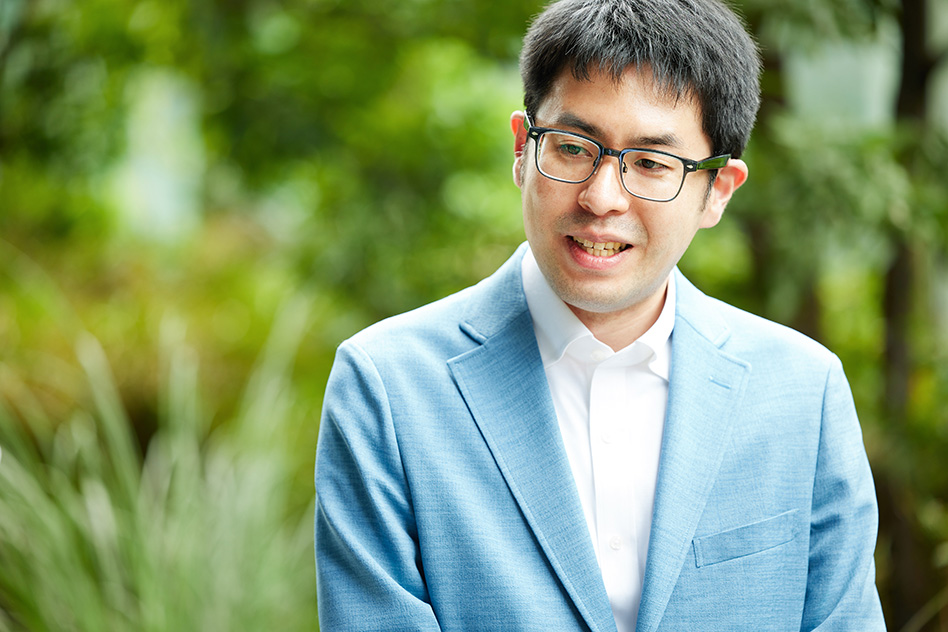
Kazuki Yasuda Predictive Management Unit, DPP Promotion Department, O&M and Engineering Strategy Management Division
Kojima: I felt a combination of expectation and anxiety. I had heard that at JERA, even someone in my position could be part of new business ventures, which inspired me to take a chance.
At the same time, this was the first time I had worked with people from TEPCO, so I had no idea how they operated their power plants. Consequently, around the time I joined JERA, there was also a reshuffling of personnel. I worried about being surrounded by people from TEPCO and how it might affect our ability to work smoothly together. But once we all became a part of the same organization, my fears were instantly allayed.
A Culture Shaped by Differences in Corporate Ethos
Kojima says she was pleasantly surprised when she finally made the move to JERA. The organization isn’t rigid, and there aren’t factions of former TEPCO and Chubu Electric Power employees like she thought there might be. Instead, so many different backgrounds foster an astonishingly open culture of diversity and synergy.
Kojima: After my transfer, I was assigned to a department that forecasts electricity demand for fuel procurement. In my current department, there are people from TEPCO and Chubu Electric Power, as well as other mid-career hires, so there is a good mix of people. As someone who used to work at Chubu Electric Power, I only knew about power generation facilities and operations in western Japan. My coworkers from TEPCO tell me about how they do things in eastern Japan, and I, in turn, share my knowledge of the west. And this exchange helps us come up with better ideas.
This may just be me, but I’ve noticed that people have different working styles depending on their backgrounds. People from Chubu Electric Power are more craftsmen-like and tend to hone their expertise. People from TEPCO, on the other hand, often seem open to new ideas, proactively making proposals and offering novel opinions. While their approaches may differ, they both possess valuable qualities and, when brought together, give rise to even more powerful synergies.
JERA’s corporate culture is very different from that of its parent companies. At Chubu Electric Power, I was addressed by my title, but at JERA, I am simply addressed by my name, so I feel that psychologically, there is less distance between me and my colleagues. It’s also much easier to approach my boss, which makes a big difference in getting work done.
For instance, even if a project has stalled, our bosses are aware of the latest developments because we communicate with them regularly. Often, they’re working right beside us to figure out why progress has slowed and what the issues are and then help us find the right solutions.
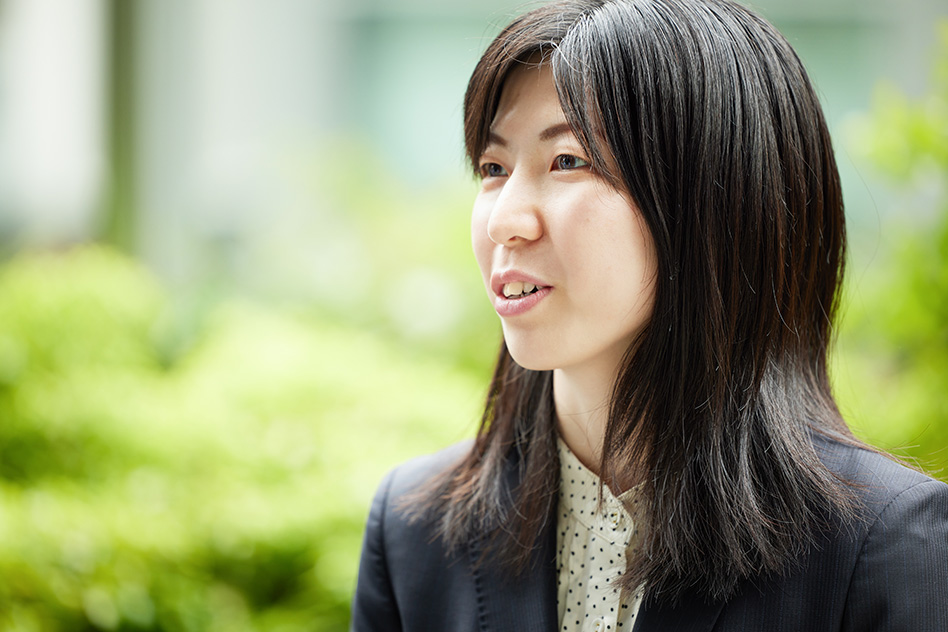
Reiko Kojima Business Environment Unit, Integrated Portfolio Strategy Group, Optimization Division
Yasuda: I can attest to the “flatness” of the organizational structure at JERA. Even the more junior colleagues feel comfortable speaking up, which helps make our work that much quicker. My department is tasked with using digital technology to analyze power plant data and detect any potential early warning signs in the equipment as early as possible.
Openness is essential for our organization to accomplish our mission of “delivering value quickly.” To me, it seems that many people who apply for a digital department like ours are relatively open-minded in the first place. Together, we want to build a team where everyone can work together on an equal footing.
I also think the size of the organization at JERA is just right. TEPCO and Chubu Electric Power have many employees in many different departments, so I understand that certain departments have to operate within a more conventional hierarchical structure. But since transferring to JERA, I’ve felt a sense of liberation, and the convergence of approaches from eastern and western Japan has prompted me to reevaluate my previous perspectives.
Jamaluddin: From my perspective as a mid-career hire, both TEPCO and Chubu Electric Power employees contribute to the diversity at JERA. Someone from TEPCO will often explain something to me, and someone else from Chubu Power Company will chime in, which leads to a lively exchange of ideas and opinions.
The energy industry is often perceived as male-dominated, but there are relatively more female employees at JERA than at other companies. JERA also boasts a considerable number of non-Japanese employees, including myself. Many employees have transferred from careers outside the company, so we are truly a diverse group of people.
My current department is engaged in the upstream business of fuel ammonia, particularly in the project development for producing ammonia as fuel for our power plants. Since ammonia does not emit CO2 when burned, combusting ammonia with coal-fired power generation reduces CO2 emissions from power plants. Our job is to assess various upstream project developments to secure the supply of this fuel ammonia. There are about 20 people in my department, including several women and non-Japanese employees, and many of us are still relatively young. With such an egalitarian atmosphere, people take responsibility for their work regardless of age or title. It's truly a diverse place to work.
Yasuda: Diversity has a substantial impact on our corporate organization and operations. I’m responsible for developing a wide range of applications, so I interact with overseas vendors and partner companies as well as JERA’s Information and Communication Technology Division, which has traditionally had many mid-career hires from outside the company, including foreign nationals, so there are more and more opportunities to work with a diverse group of people from various companies.
We communicate in Japanese as well as English, incorporating ideas into our applications that we would never have come up with within the conventional framework of a Japanese electric power company. Through these synergies, JERA is able to generate new services and value that build on its accumulated expertise.
Jamaluddin: In the Business Development Division, we work with an array of experts from commercial and technical fields who expose us to new information. When you work with such a diverse group of people, you get different ways of answering the same question, which provides us with new insights and sparks further discussion.
When there's a range of opinions already on the table, it's easier to express your views, further invigorating the conversation. With a group of people who have been doing the same thing for a long time, they will tend to see things in a similar way, making it difficult to shift the paradigm or come up with a diverse range of solutions, no matter how long the discussion continues.
Kojima: Indeed, it’s crucial to have discussions beyond the confines of the organizational structure. From what I remember, there wasn't much proactive communication between power plants at my previous company. The fuel and power generation divisions were distinctly separate, which meant that people in roles like mine didn't receive any information about what the other side was doing.
At JERA, our Optimization Division is also divided into fuel and power generation sections, but we always make it a point to share information between the two. The equipment and the operation methods can differ substantially between the two sides, and the same event may be interpreted differently depending on where you stand. In light of these differences, we value each other's perspectives, merging them into our operations in a way that makes us truly appreciate the importance of diversity.
Yasuda: In some ways, an organization that encourages candid discussion allows its employees to express themselves. People might think that power companies are rigid and aren’t conducive to expressing yourself as an individual, but that's not the case at JERA. Our offices are filled with lively discussions that transcend age or hierarchy. The atmosphere isn't created by someone deliberately trying to foster an “open workplace.” It just is.
Jamaluddin: Still, there should be more opportunities for interaction between departments, if I may say so. It’s been fascinating to hear from both of you about the O&M Engineering Strategy and Optimization divisions, and I feel that this kind of interdepartmental exchange could give birth to new ideas. I also think it would be beneficial if we could hear more about other departments on a regular basis.
Kojima: While I keep in touch with the people I used to work with at the power plant, there are other departments whose work I'm unfamiliar with due to a lack of direct involvement in their operations.
I often get to speak with students, but sometimes I feel guilty that I can’t provide more in-depth explanations when they ask about other departments. Even if just for my own future reference, I’d like to have more interaction with colleagues from other departments. I also want to stay in touch with Mahathir and Kazuki, whom I’ve just met for the first time today.
Yasuda: Many people, especially those who come to JERA from other industries as mid-career hires, might not understand what happens inside a power plant. Conversely, people like me aren't necessarily well-versed in the finer details of something like business development. So, echoing what Mahathir has said, perhaps it would be beneficial to foster more interdepartmental interaction.
What is the vision of an organization that embodies "Global-Mindedness × Diversity"?
Global talents like Mahathir, who comes from outside the electric power industry, and young professionals such as Reiko and Kazuki all have opportunities to shine in their respective fields. What kind of vision do they have for an organization that truly represents global-mindedness and diversity?
Kojima: I know I still have a lot to learn, so I need to continue expanding my knowledge base. For me, it's about acquiring knowledge, communicating and collaborating with a diverse range of people, building business partnerships, and learning from each other along the way. Given the importance of the fuel-to-electricity conversion process in the Optimization Division, I aim to gain more knowledge about the upstream aspects of the fuel side of the business.
I want to keep improving my skills so that I'm well-equipped to take on challenges and always do my best no matter where I find myself in the future. I also hope to see more women playing active roles in departments throughout the organization. To that end, I intend to actively engage with colleagues in other departments and foster a communicative environment where everyone feels comfortable seeking advice.
Yasuda: I would like to create a system that enables the entire company to effectively leverage data managed by the O&M Engineering Strategy Division as well as other divisions like Business Management and Optimization. In fact, my ambitions extend beyond JERA. I envision a platform that can be rolled out across the entire energy industry. To lay the groundwork, I intend to keep learning more about data.
Jamaluddin: JERA is dedicated to leading the charge in establishing a global fuel ammonia supply chain. The company has also set a clear vision and timeline, so as employees, our only option is to work toward that goal. Given that this is a new endeavor, it presents many uncertainties and challenges. Nonetheless, I’m eager to acquire knowledge and deepen my understanding of ammonia to help contribute to JERA’s mission.
Since joining the company, I’ve experienced first-hand how JERA is less a Japanese company than an international entity that happens to be based in Japan. I'm currently involved with international operations, and I believe that JERA is a place for anyone who aspires to have a global impact, regardless of nationality. I've seen substantial growth in both individuals and the company as a whole, driven by vibrant discussions among people with diverse backgrounds—not just in terms of language but also culture and business practices—all of whom bring their unique insights to the table.

Mahathir Jamaluddin North American Hydrogen & Ammonia Upstream Business Unit, Hydrogen & Ammonia Upstream Business Group, Low Carbon Fuel Value Chain Division
Yasuda: At JERA, everyone is welcome, regardless of where you're from or if you've transferred from another company or industry, and this diversity naturally permeates everything we do. Being able to work as a team with such diverse talent is one of the things that makes JERA stand out. Anyone who connects with JERA's mission of “providing cutting-edge solutions to the world’s energy issues” can fit in here. I would love to see more people join us from other industries outside the energy sector.
Kojima: I think offering a comfortable working environment for everyone is crucial. Another thing that makes JERA stand out is its comprehensive system for remote work, which makes it easier to maintain a good work-life balance. In terms of business, the rapid progress of new ventures allows even young professionals to be involved, which means both the company and individuals can grow together. At JERA, exciting opportunities await anyone looking to grow alongside the company.
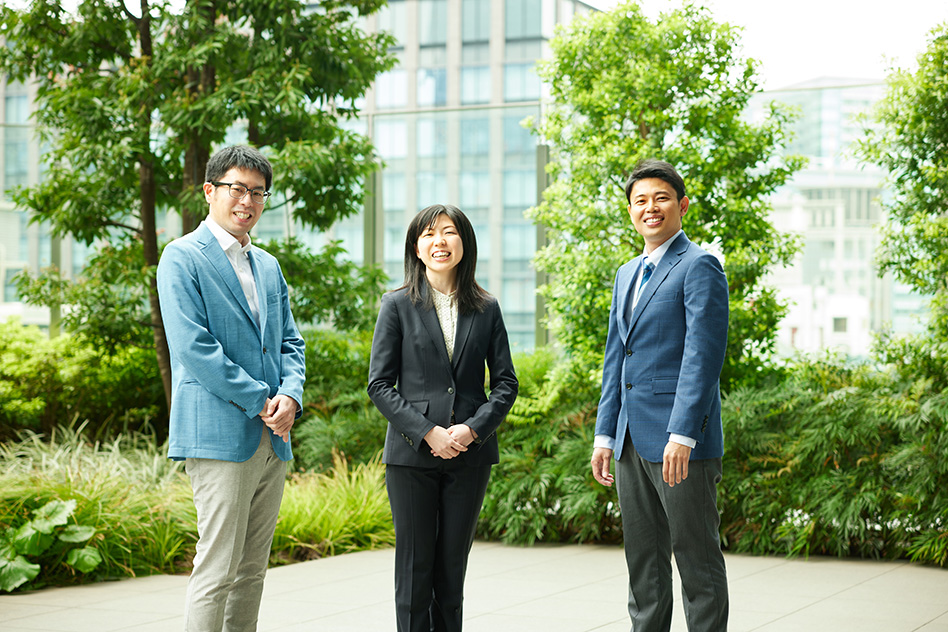
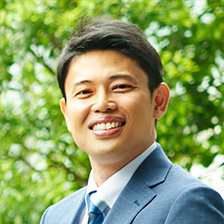
Mahathir Jamaluddin
Mahathir Jamaluddin joined JERA in 2021 after gaining experience at other energy-related companies. Mahathir is currently part of the North American Hydrogen & Ammonia Upstream Business Unit in the Hydrogen & Ammonia Upstream Business Group of the Low Carbon Fuel Value Chain Division, where he is involved in the development of projects for producing fuel ammonia in power plants.
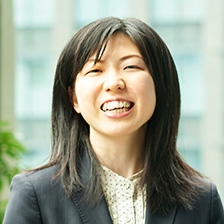
Reiko Kojima
Reiko Kojima joined Chubu Electric Power in 2017 before transferring to JERA in 2021. Reiko is currently part of the Business Environment Unit in the Integrated Portfolio Strategy Group of the Optimization Division, where she is involved in forecasting electricity demand and analyzing electricity markets.
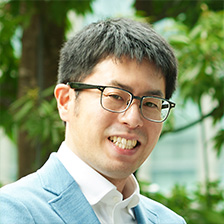
Kazuki Yasuda
Kazuki Yasuda joined TEPCO in 2015 before transferring to JERA in 2019. Kazuki is currently part of the Predictive Management Unit in the DPP Promotion Department of the O&M Engineering Strategy Division, where he analyzes power plant data and develops applications to detect equipment abnormalities.
RELATED STORIES
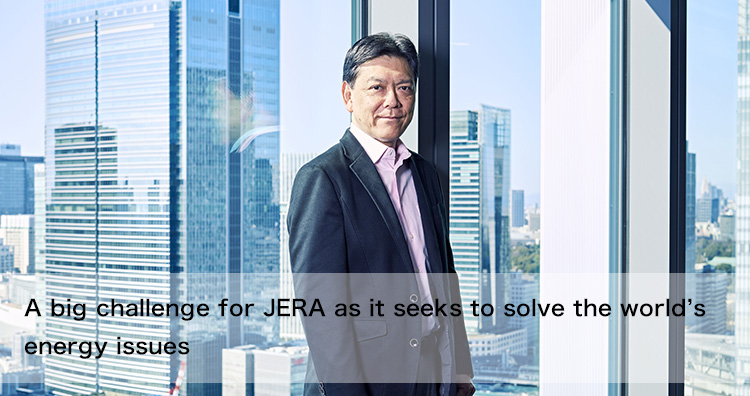
A big challenge for JERA as it seeks to solve the world’s energy issues
This article is based on a Japanese article produced by Forbes JAPAN BrandVoice, which sponsored and translated by JERA.

What is JERA’s fuel ammonia initiative, part of its grand plan to eliminate CO2 emissions?
This article is based on a Japanese article produced by Forbes JAPAN BrandVoice, which sponsored and translated by JERA.
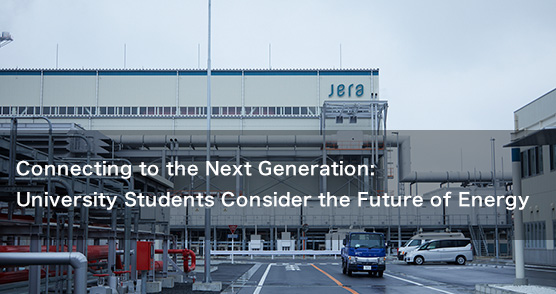
Connecting to the Next Generation: University Students Consider the Future of Energy
It's 10:00 a.m. on Friday, February 10, 2023. The air is humid in the Kanto and Chubu regions due to a southern …

